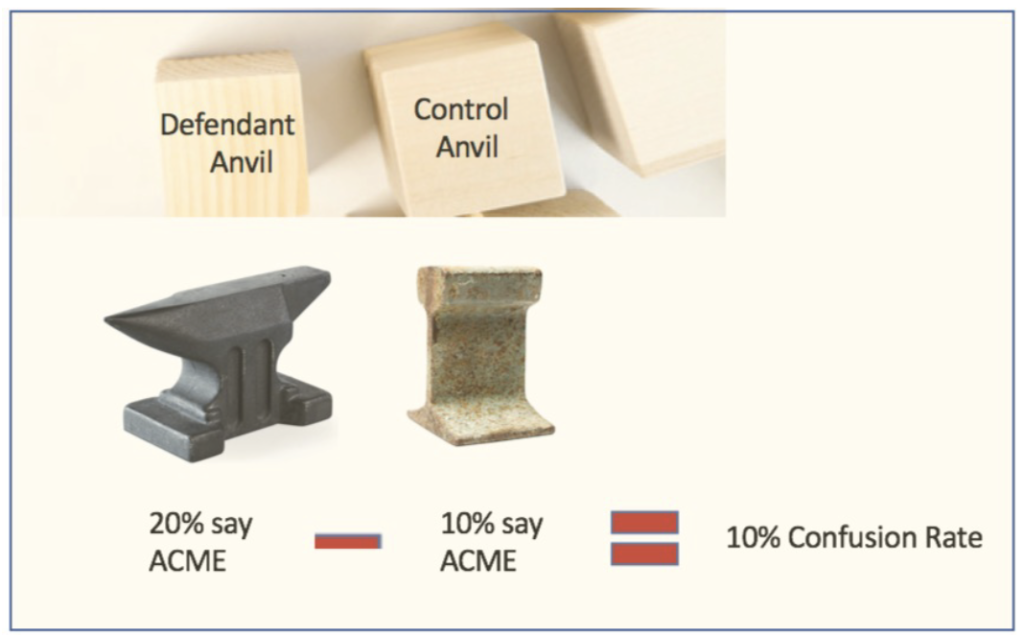
More than Eliminating Noise with Control Groups
Filter Market Share and Effects. Social scientists trained in experimental design develop hypotheses about human behavior and look for causation or explanations by comparing subjects in test and control groups. In likelihood of confusion and dilution studies, control cells are necessary to confirm causality–to filter out market share and other effects. [1]
Eliminating Noise. “Noise” interferes with the signal that the likelihood of confusion percentage is correct. If the survey contains leading questions or there is a pattern of responses in multiple choice questions, a control group can measure that effect. There is also a chance that a respondent is purely guessing or seeking a socially desirable answer. Survey takers may not believe that a company is the source of the product, but name a company that is top of mind. There could be an amount of systematic or random distortion in the group’s responses. A good control cell assists in eliminating that pattern of bias, measurement error, or sampling error.
ACME vs. Rival Hypotheses. When designing surveys, a control cell provides a standard of comparison to gauge the interpretation of the answers that the consumers give in the test cells. For example, if in the test group, 20% of the respondents mention the plaintiff company’s name (e.g., ACME) when shown the defendant’s product (e.g., Defendant’s anvil), then one may suspect that there is likelihood of confusion. A competent researcher would ask, “Was ACME top of mind because consumers believe they are the source or because of the process of being asked questions in a survey?” It is essential to partial out the “noise” or question-taking effects with a control group cell.
In the control cell, the subjects see a non-infringing anvil. If 10% of the respondents in the control group mention ACME as the source or is associated with the anvil, then the net confusion rate is 20%-10%=10%. Control cells rule out rival hypotheses or competing explanations. Did mentioning ACME occur because the subjects felt the need to give an answer? Were they guessing? Or did they truly believe that ACME was the source or was associated with the anvil?
Appropriate Control Cells. When a test group indicates a likelihood of confusion, it is not enough that the study has a control cell. It is important that a study has an appropriate control cell. One can use multiple control cells in trade dress design, to rule out rival hypotheses. An appropriate control stimuli is close to the test control stimuli and is not an alleged infringing product. In trade dress comparisons, multiple control cells may be incorporated to extract percentages from various components.
Zero Confusion? Zero Control? If likelihood of confusion in a test cell illustrates a zero or relatively low percentage, a control cell’s importance is diminished since the likelihood of confusion question is nil. Courts still favor a control group to show any effects of the questionnaire.
[1] Swann, J.B. Likelihood of Confusion, p. 62. in Trademark and Deceptive Advertising Surveys: Law, Science, and Design, Edited by Diamond, S. S. and Swann, J. B., ABA Section of Intellectual Property Law, 2012.
